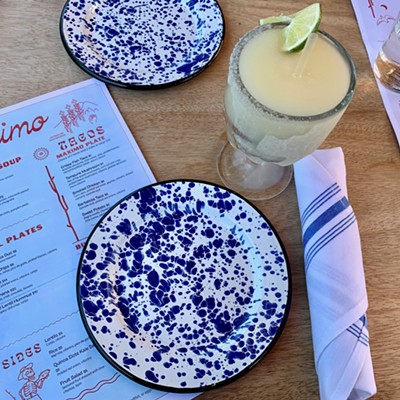It would be convenient to say that urban legends and myths can be traced back to some shred of a fact, but the disturbing truth is that some, especially the more entertaining rumors, appear to have no real logical foundation whatsoever. The first three out seven common urban food legends discussed after the jump.
Pop Rocks and Soda: A Deadly Combination.How "Little Mikey" of Life Cereal commercial fame died an explosive death.
http://www.snopes.com/horrors/freakish/poprocks.asp
If you believe this one, Pop Rocks were taken off the market in the early 1980's after a kid ingested six packets of the candy and then drank an entire six pack of Pepsi which combined in his stomach and exploded, killing him horribly. And this wasn't just any kid. It was supposedly adorable little "Mikey" from the Life cereal commercials we grew up with ("Mikey likes it. He really likes it!").
The sensation and the noise produced by the confection has delighted and amazed children since they hit the market in 1975, but also led to wild rumors. The FDA even had to set up a "Pop Rocks Hotline" in order to explain to worried parents that the candy had been extensively tested, was completely safe and that Pop Rocks fizzle was due to a small amount of carbonation released after contact with moisture. This is perhaps what led to speculation that adding Pop Rocks to soda would create the perfect storm of carbonation - a concoction so fizzy, it could blow up a kid like Mikey. If little Mikey wasn't safe, who was, dammit?
It's likely that a child may have actually ingested a large amount of pop rocks and soda and suffered a bad stomach ache and even been taken into the emergency room. However, we can't imagine eating a large amount of any candy followed by an entire sixer of cola would not produce a similar effect.
General Foods stopped marketing Pop Rocks in 1983. This was, in hindsight, probably the worst move they could have made as this is often cited as proof that the candy was dangerous and therefore ripped from the shelves. It was purchased by Kraft Foods in 1985 but sold as "Action Candy" and never achieved previous levels of success. Today it is back on the shelves as Pop Rocks, and though rumors are nowhere near 80s frenzy, they still surface now and then.
As for little Mikey, he was a popular television figure at the time and someone that children related to but was relatively anonymous. His real name is John Gilchrist. He's all grown up and living a very unexploded life New York City where he works for a radio station.
Twinkies Have A Shelf-Life of Forever
http://www.snopes.com/food/ingredient/twinkies.asp
Those unnaturally yellow tubes of cream-filled cake have been a part of American culture since 1930. No matter what turmoil, disaster, war or scandal befalls us, there is one thing we can count on: by God, there will be Twinkies and they will taste exactly the same as they did five, ten, and twenty years ago.
Americans consume roughly 500 million of the little snack cakes annually, accounting for their consistent availability in the marketplace. This never-out-of-stock phenomenon is the likely origin of various "everlasting" Twinkie myths below:
Twinkies remain edible for anywhere between fifty and one hundred years.The Hostess Company has not produced a new Twinkie in decades. They are, instead stored by the billions in a huge warehouse. Many of the Twinkies bought today are from the original batch.
The shelf life of a Twinkie is longer than the cellophane it's wrapped in.
Twinkies contain embalming fluid.
Twinkies in fact have a shelf life of 25 days, not 25 years. This is still a relatively long time for a baked good, but the secret is not embalming fluid, but a lack of dairy products. The sponge cake is made from flour, sugar, and eggs and then injected with a vanilla cream filing via those three little holes on the bottom. "Injected", now there's a word to whet your appetite.
Coca Cola. Where do we begin?
Snopes.com has an entire category known as Cokeloredevoted to debunking rumors running the gamut from idiotic ("Coca Cola is an effective contraceptive") to weird ("Fanta was invented by the Nazis") to outright bizarre ("Pouring Coca Cola on a piece of raw pork will cause worms to come out of the meat").
Perhaps the most pervasive Coke rumor is that "Coca-Cola will eat through your stomach," conjuring up frightful images right out of a horror movie of smoking acid burns and agonizing pain. Where did this come from? An email circulating around 2001 contained a list similar to this:
In many states highway patrol carries 2 gallons of Coca-Cola to remove blood from highway accidents.You can put a t-bone steak in a bowl of coke and it will be gone in two days.
To clean a toilet: Pour a can of coke in the bowl. Let "the Real Thing" sit for one hour, then flush.
To clean corrosion from car battery terminals: Pour a can of Coke and watch corrosion bubble away.
For full list, click here.
The cleaning tips are from Joey Green's Polish Your Furniture With Your Panty Hose (1995 http://www.wackyuses.com/coke.html. Coca-Cola is in fact a mildly effective cleaning agent because it contains carbonic acid, a weak acid found in most carbonated drinks. However, your own stomach acid is many, many times more corrosive.
Most of us associate cleaning products with hazardous chemicals. Once people saw the way Coke ate through the grime in their toilets it was hard to imagine it not doing some kind of damage to their internal plumbing. Thus, a whole slew of unfounded acid-based rumors were born.





